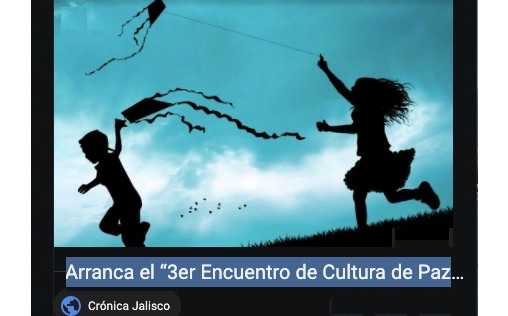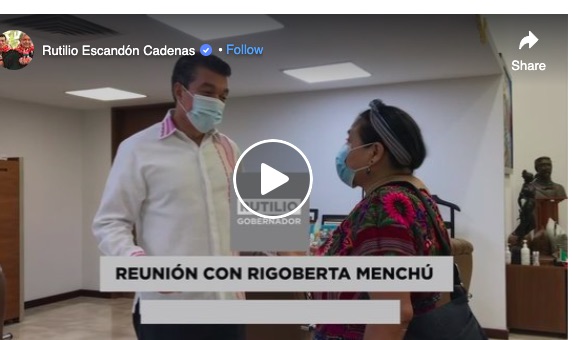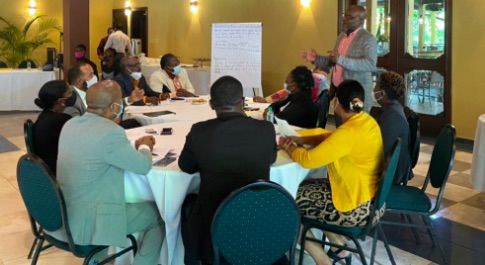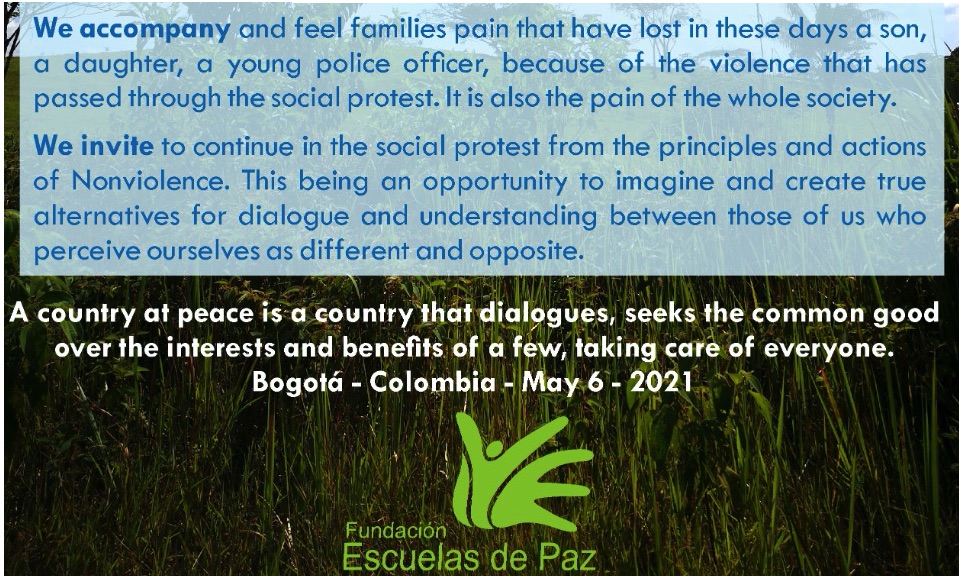. . DEMOCRATIC PARTICIPATION . .
An article published by El Litoral (translation by CPNN)
On Saturday [June 12] the closing day of the 3rd Latin American Congress of Restorative Justice took place in a format that was entirely virtual. During the three days of the event, there were more than 60 exhibitors from various countries: Argentina, Chile, Colombia, Mexico, Brazil, Peru, Honduras, Uruguay, Bolivia, Guatemala, the Dominican Republic and Great Britain.

On the last day there were keynote conferences by Austen Ivereigh entitled “How to get out of the crisis – the message of Pope Francis in Soñemos Juntos” and by Roberto Pérez “Forgiveness as a way to repair and restore the social fabric, the bond personal and with others “.
Other panels during this day included (9) Socialization of restorative experiences: advocacy for democratic and inclusive communities and (10) The Restorative Pedagogy and Culture of Peace. And, finally, the Ombudsman of Santa Fe [Argentina], Raúl Lamberto, and the Ombudsman General of Lomas de Zamora [Argentina], Eduardo Germán Bauché, gave a final word.
PANEL 9: Socialization of restorative experiences
Panel 9 had as its axis the Socialization of restorative experiences: advocacy for democratic and inclusive communities, and featured lectures by Esteban Ramos from the National Autonomous University of Honduras; Natalia Cuenca, member of the “Wheels of Coexistence” program of the Ministry of Education of the province of Santa Fe; and Silvia Vecchi, Jessica Name and Sergio Pepe, who presented the interdisciplinary judicial experience in the province of Tierra del Fuego. The table was coordinated by the member of the Latin American Institute of the Ombudsman Ana Agostino.
Kicking off the panel, Esteban Ramos spoke and addressed the importance and conclusions of the training programs developed in Honduras as a contribution to the culture of peace: “Public policies are empty without the entire population participating in them, if the recipients of these policies are not considered subjects ”.
“We developed a training program focused on peace education at the University of Honduras where we work on axes related to peace and conflict resolution, to train citizens committed to pacifist practices,” he said and added: “Its content is related with the training components: training workshops; actions based on peace composed of work phases; and the community coexistence seen with the visit to the rural community of Honduras ”.
Finally, he stated that “since Honduras is one of the most violent countries in the world, being a cross-cutting issue in Honduran society, our training programs are very important for creating a reflective space for coexistence in which those who participate can debate without fear of being judged “, and he concluded “We develop dynamic spaces to think and feel what is happening. It is a practice with each other within the program, but which are applicable to the socialization of each of the participants outside the program ”.
Then, it was the turn of Natalia Cuenca, who explained the public policy “Wheels of coexistence” that is applied in part of public secondary schools in Santa Fe [Argentina]: “We address these provincial programs and plans to guarantee the pillars of education such as inclusion and educational quality, to be able to think of school as a place of life, as a place to learn to live in the common ”.
“The Coexistence Wheels are a device that tries to democratize the institution of the school, through meetings where secondary students socialize their perceptions about school conflicts, and propose peaceful resolutions,” he explained and deepened: “They have horizontality as a point and seek improve coexistence in the classroom through dialogue. Thus the educational communities elaborate their coexistence plans, and the student is the protagonist of the legalities that govern them, which makes him part of them ”.
Closing the panel, Silvia Vecchi, Jessica Name and Sergio Pepe made a joint presentation on their role of contributing to social peace, taking clear action to achieve these objectives: “It is of great importance to be critical and identify the shortcomings to the time of not being able to resolve certain situations because, for example, a criminal court can prevent a conflict from being reconciled “.
“Perhaps the tools are not available when dealing with a victim who has vulnerabilities, that is why we believe that the values and premises of Restorative Justice allow us tools that improve and humanize these processes”, they highlighted and maintained: “We must rely on, for example, the Directorate of Alternative Methods that help us provide tools for certain conflicts to know when the application of the traditional criminal law may fail to solve the conflict.”
They also explained that “public policies on access to justice are promoted as important places in developments for the transformation of culture and the pacifying possibilities of society”, and invited “members of society in general and even to our colleagues who need to talk to reflect, to dialogue with each other’s own experience, to think about possible personal and common itineraries. We encourage everyone to talk to each other seeking shared interests and to address differences ”.
Finally, they emphasized that “we must make criminal justice the application of last resort. There are other ways that we cn activate and connect with each other to resolve a social conflict sooner.”
PANEL 10: Restorative Pedagogy and Culture of Peace
Panel 10 was called The Restorative Pedagogy and Culture of Peace and was attended by Celia Maria Oliveira Passos from the Institute of Advanced Solutions of Brazil; and Rodolfo Nuñez from Network and Community Work at the Ministry of Justice and Human Rights of the Argentine Nation. The panel was coordinated by Pablo Noel, president of the Buenos Aires Province Magistrate College.
Rodolfo Nuñez analyzed the experience of social networks and restorative justice, and in that sense he stressed that “there are many points of connection between the two since both force us to understand that there are heterogeneous units, diversity of experiences, knowledge, understanding and trajectories already existing. There are plots that pre-exist us, we must abandon the belief that we create the networks ”.
He continued, “We have to get out of the judicial field to realize that the subjects are crossed by that knowledge, understanding, different experiences and that all are influenced in some way by public policies.” And to access that pre-existing knowledge we must create spaces of dialogue with other plots, which we must do with restorative justice as well ”.
Through a presentation he spoke of the community of links, which “must establish interactions between plots to understand adolescents in situations of socio-criminal vulnerability. One of them, for example, is to do community work on the same situation. In our experience working in an area of high social vulnerability we were able to realize that this community has very little detailed knowledge of the State”.
(Article continued in the right column)
(Click here for the original article in Spanish)
Discussion questions
Restorative justice, What does it look like in practice?
Mediation as a tool for nonviolence and culture of peace
(Article continued from left column)
“Participants in the intervention must have a rights approach, there must be voluntariness, a community approach, territorial and local management, and it must be inter-agency. Today there are those who question voluntariness, I think it is wrong, voluntariness should not be ignored because young people have things to say, you have to listen to them. It is a restorative practice,” he concluded.
[Editor’s note: the principle of voluntariness is that which “provides that all those involved in a mediation process should have the absolute freedom to decide if they want to be or not parts of it. This translates into two aspects: first, the willingness to enter a mediation, and second, the freedom to remain in it or withdraw from the process at any time.”]
For her part, Celia María Oliveira Passos invited us to think “what is restorative justice, what type of restorative justice are we talking about”, and stated: “Restorative justice is built according to the communities, the spaces, culture, there is no single definition. Each one understands it from their world, from their perspective, so it is necessary to create new spaces to study it ”.
This introduction served to advance around the four waves that can be differentiated in restorative justice and its links with neuroscience and quantum physics: “The first two waves in restorative justice include the restoration of damage, response to pain or offense, the third wave brings us new challenges, to think of restorative justice as a way of life, a philosophy of life, as a way of being, and the fourth wave demands that we understand the current world as a cry for social justice, of outrage at inequalities “.
Regarding the link between neuroscience and restorative justice, she explained that emotions “cannot be foreseen, they arrive, arise and dominate the brain, the organism emanates adrenaline, under tension a person loses the ability to reason. On the other hand, when hormonal reactions such as oxytocin appear, there is a better procedure, there is a better reaction. When there is dialogue, when there is empathy, we can expect peaceful reactions ”.
Plenary speeches
The first of the lectures was given by Austen Ivereigh and was entitled “How to get out of the crisis: the message of Pope Francis in Let’s Dream Together”. The presentation focused on the journalist’s conversation with Pope Francis about the content of the pontiff’s publication.
He explained, “The book is divided into three parts that follow the classic dynamics of Latin American Catholicism, which is to see, judge and act or how the Pope prefers to reformulate it, contemplate, discern and propose. Contemplating and seeing is important because you have to see reality as it is and accept it as it is, the second step is to discern or choose and choosing is to see what humanizes us and what dehumanizes us, to see the good and to see the bad, and the third step is to act where we can propose ways of acting that reflect these new awareness of values ”.
“When the church speaks of the preferential option for the poor, it means that we must always take into account the impact on the poor of the decisions we make, but it also means that we must put the poor at the center of our way of thinking”, He continued: “The most moving part of the book has to do with something that you will remember, when the Pope was still in Buenos Aires as Archbishop he organized a mass every year in June in the Constitution Square of Buenos Aires and the periphery would come there”. “It says in the book that he felt the good spirit before that praying crowd, which reminded him of the humble people who followed Jesus, he says that the people always carry a promise in their hearts, an invitation that makes them walk towards something they desire despite the marginalization they suffer. The preaching of Jesus evoked ancient promises they carried in their entrails, in their blood, an ancestral awareness of the closeness of God and their own dignity, for that reason they followed Jesus because he gave them dignity ”.
The coordination of both conferences was in charge of María de los Ángeles Pesado Ricardi, a member of the General Defender of Lomas de Zamora [Argentina], who thanked Ivereigh for his participation and gave the floor to Pérez.
In turn, Roberto Perez spoke about “Forgiveness as a way to repair and restore the social fabric, the personal bond and with others:” I am convinced that we are in a moment of re-evolution of consciousness. It is about jumping to another level of conscience that humanity needs to continue to exist. And that is why, in this re-evolution of conscience, there is a path that we must never forget, and that is that generally the situations that surround us are fraught with tension and violence. ”
“There is a well-known saying: ‘Dad, if we kill all the bad guys, do we get all the good guys? No, son, we are all murderers.’ Changes are not made with violence, they are made with education. To hold an event like this is to believe in Peace, it is to believe that changes are not made with violence without education.” “ Forgiveness is the fundamental key to maintain the social fabric of community, of family. All agents of justice must have an attitude that allows for forgiveness, and forgiveness can be generated when the people who are participating in conflict situations carry this attitude of hospitality within them ”.
To conclude, Pérez pointed out that “to be able to forgive, to achieve peace, you need to love. And in this violent society we have to go back to this concept of Plato, who says that to love is to want the good. What is good? Good is the full development of what I love. Therefore to love is to want my own good and the good of others ”.
Congress closing
At the closing of the Congress, and outside the planned program, the Minister of the Supreme Court of Justice of the Province of Buenos Aires, Sergio Torres, said that “sometimes it is not enough to be right, but it is also necessary to be many and this confernce is a good example.”
“The concept of restorative justice has an extremely valuable aspect which is the role of the victim. With the appearance of the nation states and the expropriation of criminal action by the states the victim began to disappear, first languished and then disappeared” , he recapitulated and added: “The role of the State, instead of aiding the victim, diluted her, transformed her into someone anonymous and made her disappear.”
Finally, he highlighted that “this logic of restorative processes that are used successfully to address and resolve some conflicts and damages in different contexts and settings such as families, neighborhoods, schools, sports, places the victim in a central position.”
Later, Raúl Lamberto spoke, after thanking all the participants and organizers of the event, remarked that “the book that we presented yesterday is a paradigmatic change that we need and should be posted on the pages of all the organizers so that it is available of all ”, and emphasized:“ It is necessary that the restorative culture be developed, known and practiced ”.
Finally, he valued: “This congress has a virtue, no one was asked how they thought, where they came from, what their ideology was, what their spirituality was, but they asked if they shared the idea of restoration as an idea of a new and modern practice to deal with conflict ”.
Finally, Eduardo Germán Bauché remarked that “surely there were exhibitors outside of this program who we would have liked to hear. I invite you to the 4th Latin American Congress of Restorative Justice that will be held on August 4, 5 and 6, 2022.”, He concluded, “I am grateful, happy and convinced that the future will bear the fruit of what we are sowing today, here, in each home and in our daily tasks ”.










